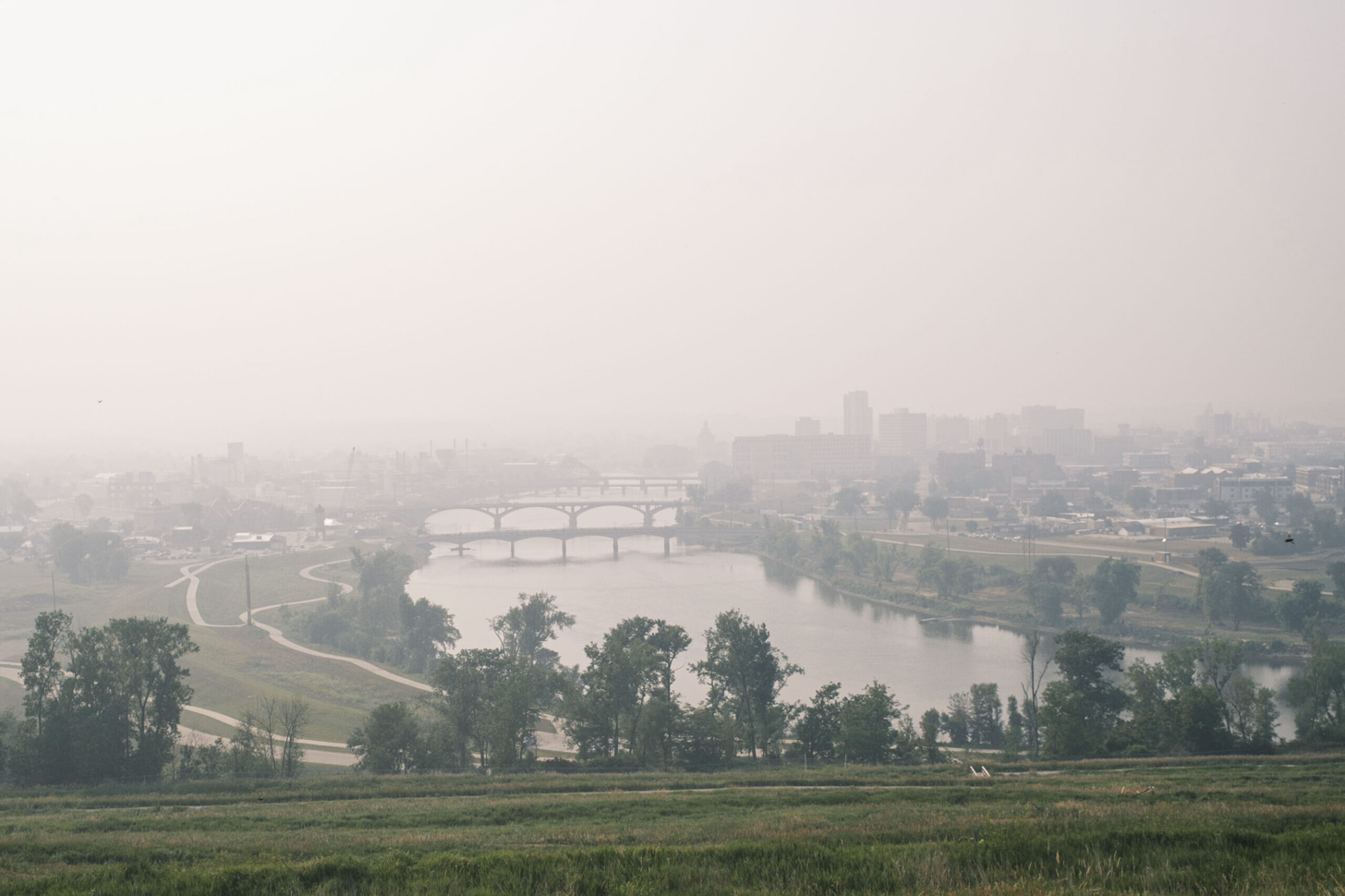The lingering presence of wildfire smoke has made for an unusual start to summer across the Midwest. It also comes during a near-record drought crisping fields across the Corn Belt and the threat of hotter summers to come.
By Madeline Heim, Milwaukee Journal Sentinel, and Chloe Johnson, Minneapolis Star-Tribune / July 7, 2023
MADISON, Wis. – Masks made a comeback in Wisconsin this week.
As smoke from Canadian wildfires blanketed the state, health officials urged people to wear face coverings – previously worn en masse to reduce transmission of COVID-19 – if they had to spend time outdoors. This time, they blocked out smoke particles.
At Madison’s Pinney Library staff handed out N95 masks. The building was busy Wednesday, especially the children’s section, in part because poor air quality had caused the school district to cancel summer school and community recreation programs for the day.
“After COVID, this seems like another big thing that we haven’t experienced before,” said library page Nancie Cotter. “It’s almost a little scary.”
The lingering presence of wildfire smoke has made for an unusual start to summer across the Midwest. It also comes during a near-record drought crisping fields across the Corn Belt and the threat of hotter summers to come.
Many have thought of the region as a climate haven, rich with water resources and shielded from sea level rise and powerful hurricanes.
This summer is clouding that picture.
“When we think of both climate and air quality, we often think of it as something that happens to other people,” said Tracey Holloway, a professor in the University of Wisconsin-Madison’s Department of Atmospheric and Oceanic Sciences. “As climate changes, it’s changing everything for everyone.”
Smoke Deluge Catches People by Surprise
Forecasters say a perfect storm of factors have caused the smoke to settle over the Midwest, including atmospheric conditions. The way Canada manages its wildfires also plays a part.
And the changing climate is bringing higher temperatures, periods of drought and more volatile winds that yield wildfires that burn faster and stronger than before. They also start earlier in the year.
The severity of the problem over the past month has been a shock to the public, curbing much-anticipated summer activities. In Minneapolis in mid-June, the city’s air quality was among the worst in the world. When another wave of smoke washed over the city at the end of the month, beaches around Cedar Lake – normally packed on summer afternoons – were deserted.
“In most people’s lifetimes, this is the worst it has been,” said Matt Taraldsen, who supervises a team of air quality forecasters and researchers at the Minnesota Pollution Control Agency.
Smaller smoke incursions from Canada in 2018 and 2021 gave forecasters indications of what was to come – but nothing compares to this summer. The only real analogue stretches back over a century, Taraldsen said, when a series of fires in 1918 ripped across northeastern Minnesota, roughly from Bemidji to Duluth.
Minnesota officials have been offering advice to colleagues in several surrounding states, which had not had the experience of warning the public in recent years about smoke, Taraldsen said. But even if Minnesota had a head start in refining its public communication, the actual predictions are posing a major technical challenge.
The American, Canadian, UK and European weather models used by forecasters don’t always show with fine detail how air is moving between different levels of the atmosphere, making it hard to guess whether choking smoke will be pushed to the ground, or held harmlessly aloft.




